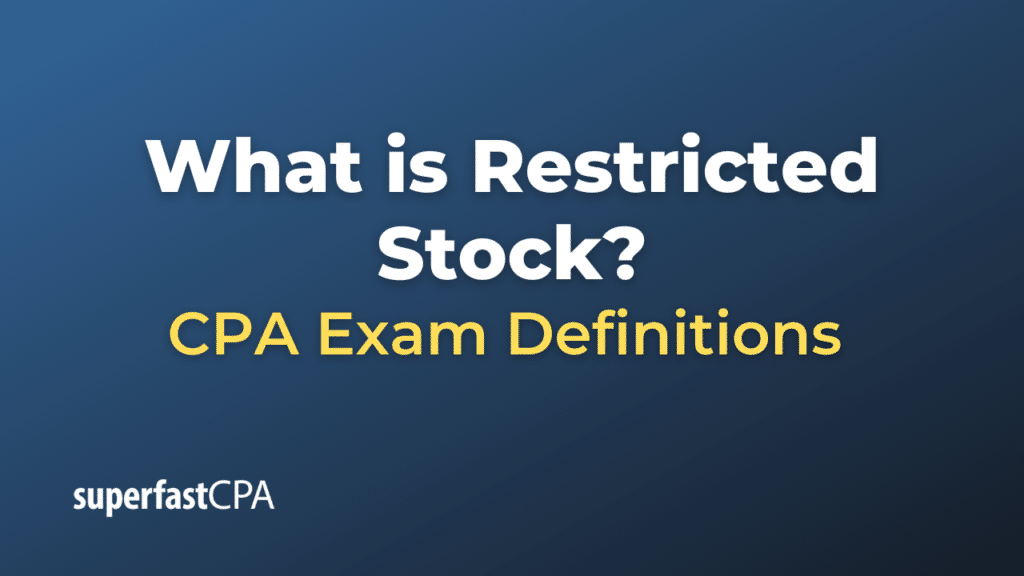Restricted Stock
Restricted stock refers to shares of a company that are granted to an employee as part of their compensation but come with certain conditions or restrictions. These restrictions typically revolve around a vesting schedule, meaning the shares don’t fully “belong” to the employee until a specified period has passed or certain performance criteria have been met. Once the shares vest, the restrictions are lifted, and the shares are treated like any other owned shares.
Key features of restricted stock include:
- Vesting Period: The most common restriction is a vesting period. For instance, an employee might be granted 1,000 shares of restricted stock that vest over four years. This could mean 250 shares vest each year for four years. If the employee leaves the company before the end of the vesting period, they typically forfeit any shares that haven’t vested.
- Dividend Rights: Employees with restricted stock often have the right to receive dividends on those shares, even before they’ve vested. However, how these dividends are treated can vary by company.
- Voting Rights: Depending on the company’s policies, employees might also have voting rights on their restricted stock, even before the shares have vested.
- Taxation: Restricted stock is typically taxed at the time of vesting, not when it’s granted. The amount of income recognized is based on the stock’s market value at the vesting date (minus any amount the employee paid for the stock). This income is typically subject to regular employment taxes and withholding.
Example of Restricted Stock
Let’s craft a fictional scenario to better understand how restricted stock works in practice.
StellarTech Solutions
David, a newly hired Chief Marketing Officer
In addition to his annual salary, David is offered a restricted stock grant as part of his compensation package to align his long-term interests with the company’s growth.
Restricted Stock Grant Details:
- Total shares granted: 10,000 shares
- Vesting schedule: 4 years, with a one-year cliff.(This means that no shares vest in the first year. At the end of the first year (the “cliff”), 2,500 shares (or 25% of the total grant) will vest. Subsequently, shares will vest evenly each month for the remaining three years.)
Scenario Progression:
- End of Year 1: David successfully completes his first year with StellarTech. As he hits the one-year cliff, 2,500 shares become his outright. He can choose to keep them or sell them.
- Middle of Year 2: David has been with the company for 18 months. In addition to the 2,500 shares that vested at the one-year mark, another 1,250 shares have vested over the six months of Year 2 (2,500 shares ÷ 12 months x 6 months = 1,250 shares). This means David now owns a total of 3,750 shares of StellarTech outright.
- Start of Year 3: David is presented with a fantastic job opportunity elsewhere and decides to leave StellarTech. By the time he leaves, he’s completed two years with the company. This means 5,000 shares (2,500 shares/year x 2 years) of his restricted stock have vested. The remaining 5,000 unvested shares are forfeited back to the company.
- Tax Implications: When the stock vests, it becomes taxable income for David. The taxable amount is the market value of the shares on the vesting date. If the market price of StellarTech’s shares is $20 at the end of Year 1, then David has additional taxable income of $50,000 (2,500 shares x $20/share) for that year, even if he chooses not to sell the shares. The same principle applies to the shares that vested during Year 2.
This fictional scenario showcases how restricted stock grants work, the importance of vesting schedules, and the potential benefits and drawbacks for both the employee and the company.













